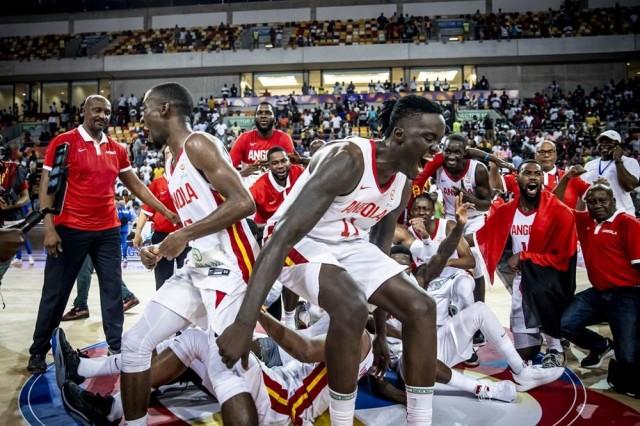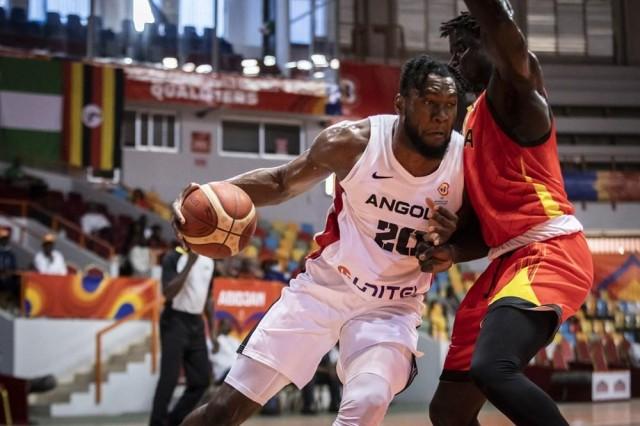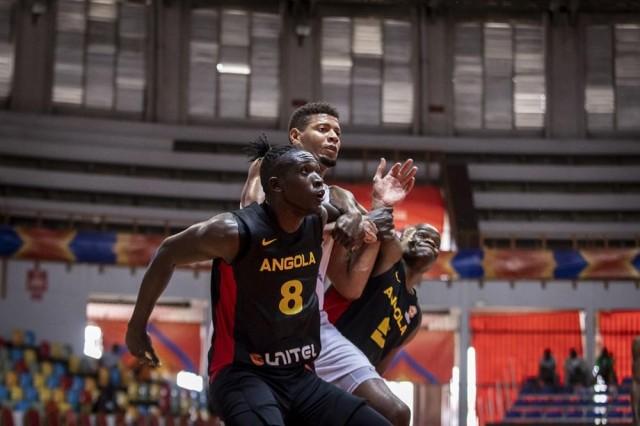FIBA World Cup Preview: A Serbian correspondent breaks down Gilas Pilipinas vs Angola

For Gilas Pilipinas' campaign in the 2023 FIBA World Cup, GMA News Online connected with Milos Jovanovic, a veteran Serbian sportswriter with an interest in Philippine basketball, to help break things down from an outside perspective. Read his previews of the Philippines-Dominican Republic game here and the Philippines-Italy game here.
There’s only few certainties in life. Americans like to talk about “death and taxes“ – the more optimistically inclined amongst us, however, usually resort to some milder forms of metaphor.
So you could say that grass is green and the skies are blue, and that, indeed, seawater tastes salty. And for the longest time, you could also say that Angola rules African basketball, and you would not be wrong as well.
Ever since achieving independence in the mid-seventies, Angolans took to basketball as their sport of fancy. The Lusophone South-Western African nation became a FIBA member back in 1979, and immediately took their native continent by storm. Starting from 1983, the Black Antelopes reeled off an impressive streak of seventeen consecutive medal finishes at the FIBA Afrobasket – a fearsome feat, made even more impressive by the fact that out of those seventeeen medals, eleven shone brightest. Between 1989 and 2015, Afrobasket gold has evaded Angolans only three times – in Senegal 1997, Madagascar 2011 and Tunisia 2015, where they won one bronze and two silvers respectively.

But times, they’re a-changin’ as Bob Dylan once reminded us. The Angolan medal train derailed in 2017 with a 7th place finish, and four years later in the Rwandan capital of Kigali they couldn’t make it out of quarterfinals either. Africa now boasts some new basketball heroes, and this World Cup is no difference – the Far East will see a pair of debutants hailing from the African shores, notably Cape Verde and South Sudan. However, the Angolans are not ready to hang it up yet – following a succesful qualifying campaign, which saw them brush off the likes of Nigeria, the former African powerhouse will feature in their 9th summit of the world’s elite.
The Angolans are no strangers to Gilas. The two teams exchanged pleasantries at the last World Cup held in China four years ago, and it was a thriller – after CJ Perez nailed a key triple to make it 73-73 at the end of regulation, it took extra five minutes for the Africans to subdue the pesky Filipinos who battled to the very end. But as we noted above, this was a different Angola team to the one which will venture into Manila looking for a repeat of that tussle in Foshan.
Back in 2019, the squad was led by Yanick Moreira, Carlos Morais, and the late Reggie Moore, who sadly passed away this June. The veteran team, which was coached by the American bench boss Will Voigt, still had some of the Afrobasket-winning sheen and that proved enough.
All of this, however, is now past tense. The new man behind the wheel is the experienced Spanish tactician Pep Claros, and he has overseen a generational shift which should look to propel Angola back into the upper echelons of African hoops. This World Cup, in a way, is a baptism of fire for many in the squad – a fact obvious from the mere look upon the roster, which features very few holdovers from the Chinese expedition mentioned above.

For this new look Angola, it all starts and ends with Bruno Fernando. The Luanda-born 6’10“ center caught the eye of American scouts while playing for his national team U-17 selection – this lead to him spending some years in the high school, and subsequently, the NCAA system, resulting in a 2nd round selection by the Philadelphia 76ers at the 2019 NBA draft. Since then, he spent time with Atlanta Hawks, Boston Celtics and the Houston Rockets, mainly logging minutes as the hustle-energy guy coming off the bench. Expect Claros to use him as a lane intimidator and rim protector on the defense – on the other side of court, he will feature heavily in pick and rolls, as well as the end target of numerous lob passes going his way.
Fernando might grab the headlines, but he’s not the only one with the weight of expectations on his shoulders. Jilson Bango, who lead his German outfit Lowen Braunschweig in rebounding, enjoyed a stellar qualifying campaign and is another more than capable post option in Claros’ system. Much like Fernando, he stands at 6’10“, and can leap with the best of them. Silvio Sousa is another solid choice down low – the former U18 Afrobasket MVP has just completed his first professional season in France, and will suit up for the Greek side Aris next year. Between Fernando, Bango, and Sousa, Angola is hardly starved for paint presence, especially if we also account for the home-based Teotonio Do, who contributed significantly in the qualifiers, and Kevin Kokila, who plies his trade in the French LNB.

The options, however, start to spread a bit thinner once we move away from the basket. The leading pair of point guards, Childe Dundao and Gerson Domingos, split the organizing duties during the quals – neither stands taller than six foot, and neither can claim any notable foreign experience, both playing for Petro de Luanda in the Angolan Unitel Basket league. Of the duo, Domingos is a more seasoned option, having already represented his country at the previous World Cup. Dundao, who’s listed at mere 5’6“, will surely dazzle with his speed and handles, looking to gain pace advantage over his adversaries. Dimitri Maconda is another option, especially if the height of the aforementioned pair starts working against them.
What remains from the roster is a mixed bag. Forwards Antonio Monteiro and Eduardo Francisco play for the Portuguese giants Sporting and Benfica, and might be odds-on to make the final roster cut yet to be announced at the time of writing. The two-guard position features an open battle between Milton Valente, Gerson Lukeny, Helder Neto and Danilson Francisco, and it was Valente, the 6’4“ shooter playing for the Desportivo 1. de Agosto, who started the last two competitive games. Whether he keeps the edge he gained there remains to be seen.
While the Angolan bigs look scary on paper, the fortunes of this team will depend largely from the guards. Neither Fernando, nor Bango or Sousa are elite shooters, and they will require some court-spreading created by the backline. Unluckily for them, this is a sore spot for the team – Angola shot mere 27.8% from the three-point range in the quals, failing to find the bottom of the net from distance on the regular basis. Without the artillery support, defenses will quickly collapse on the Black Antelopes frontline, severely impacting their gameplan. And how the guards handle defensive chores versus the larger opposition is another question mark.
Gilas faces off against the African squad in the second game of the group stages. By then, the teams will vacate the mammoth Philippine Arena in Bulacan and move to the friendly confines of Araneta Coliseum, venue which already saw some World Cup action back in 1978.
Depending on the outcome of the first tie versus the Dominicans, this could well be a do-or-die game for the team Pilipinas. Alternatively, it could also be the game which propels them to the final sixteen – and if the stars align, this might also result in an oh-so-precious Olympic berth, which has been avoiding the hoops-crazy nation for half a century now.
But let us not get carried away too much. For Coach Chot Reyes, Jordan Clakrson, and the rest of the team, it will be one step at the time. One win out of the first two encounters will set up a frenzied final game versus Italy, where anything is possible. Here’s to hope, then – and a lot of three pointers.
—JMB, GMA Integrated News




